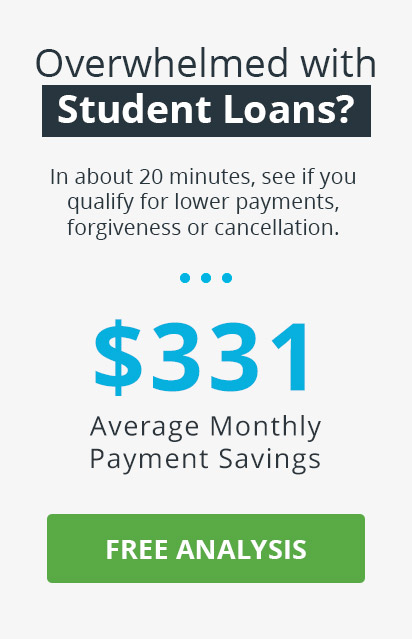
“Student loan deferment,” or “deferment,” is a temporary postponement of monthly payments on federal student loans designed to provide financial relief during challenging circumstances without canceling the loan entirely. Eligible situations for deferment include enrollment in school at least half-time, unemployment, active military service, undergoing cancer treatment, participating in graduate fellowship or rehabilitation training programs, or being a Parent PLUS borrower. Payments are deferred, but depending on the loan type, like unsubsidized federal or private loans, interest accrues, potentially increasing the amount owed.
Borrowers must apply directly through their loan servicer, identifying the specific deferment choice that applies to their situation and sending in the necessary supporting documents to qualify for student loan deferment. Continue making payments until deferment is officially approved to avoid negative impacts on loan status. Federal student loans offer various deferment types. A half-time enrolled student gets a deferment in school, a financial hardship deferment if they get help, an unemployment deferment, a military service deferment during a war or an emergency, and a cancer treatment deferment. Private student loans offer deferment options, but policies vary by lender, typically covering situations like enrollment, military service, or economic hardship. Borrowers must contact private lenders to understand specific deferment opportunities and eligibility requirements.
Pros of deferring student loans include providing temporary financial relief by halting payments for up to three years, with the government covering interest for Federal Subsidized Loans and Perkins Loans to prevent loan balance increases. It helps borrowers avoid delinquency and default, protecting their credit scores and allowing them to focus on other financial priorities or life events. Deferment has cons, such as accruing and capitalizing interest for unsubsidized federal and private loans, extending the repayment period, and potentially increasing the total interest paid. Eligibility is limited to specific circumstances, and approval is not guaranteed, delaying progress toward loan forgiveness programs.
Understanding what is deferment, how to qualify for student loan deferment, and its various types helps federal student loan borrowers navigate financial challenges effectively, ensuring they manage their obligations responsibly without defaulting. Identifying and exploring deferment options directly with the lender is essential during financial hardship and significant life changes for students with private loans.
Table of Contents
What is Student Loan Deferment?
Student loan deferment, or “loans in deferment,” is a temporary delay in monthly payments on federal student loans. Borrowers experiencing financial hardship, enrollment in school at least half-time, unemployment, active military service, cancer treatment, participation in graduate fellowship or rehabilitation training programs, or Parental PLUS borrower status qualify for the option. Deferred repayment frees borrowers from repayment obligations, although interest accrues throughout the deferment period depending on the terms of the loan for students.
The purpose of student loan deferment is to provide financial relief during difficult times without completely canceling the loan. It allows borrowers to manage their financial responsibilities flexibly by temporarily suspending payments, easing immediate financial burdens. Its flexibility is crucial for borrowers navigating significant life events or career transitions where regular loan payments are challenging.
Student loan deferment is requested directly from the loan servicer. The process involves identifying the specific deferment option, completing the relevant deferment request form, and submitting it with any necessary supporting evidence. Continue making payments until the deferment is properly approved to avoid negative impacts on the loan status. There are several deferment options for federal student loans, but private student loan policies vary, so borrowers must contact their lender or servicer for specific details.
Who is Eligible for Student Loan Deferment?
Individuals eligible for payment-deferred student loans are federal student loan borrowers who meet specified conditions, allowing them to halt monthly payments temporarily. Federal student loan deferment options are flexible and often provide relief for up to three years. The most common type of deferment is in-school deferment, which delays payments until after graduation or when enrollment falls below half-time. Additional federal deferment choices include military service, post-active duty service, cancer treatment, unemployment, financial hardship, graduate fellowships, Parent PLUS borrower status, and rehabilitation training programs. These deferments apply to Direct Loans, Federal Family Education Loan (FFEL) program loans, and Perkins Loans.
Private student loans differ, but federal loans have set deferment periods. Private lenders are not required to offer deferment but frequently provide similar options, including deferral for school enrollment, unemployment, or military service. Borrowers must consult their loan servicer to determine eligibility requirements and deferment opportunities unique to their private loan terms. Understanding these options helps borrowers navigate financial obstacles more efficiently, ensuring they meet their student loan obligations without defaulting.
Can You Defer Student Loan Payments?
Yes, you can defer student loan payments in certain situations. Student loan deferment enables qualified borrowers to suspend or briefly suspend payments for up to three years. Deferment is allowed for federal student loans if enrolled half-time, undergoing financial hardship or unemployment, or serving in the military. Subsidized federal loans do not accrue interest during deferment, but unsubsidized federal loans and private loans do, raising the total loan balance.
Applying for deferment usually involves providing paperwork and an application to the loan servicer. Continue making payments while the application is processed. An income-driven repayment plan is a better option for long-term reduced payments, as deferment is a temporary solution. Private student loan deferment policies vary by lender, so explore options straight with the private loan servicer. Ensure the qualification for deferment and understand its impact on interest rates and the total cost of the loans. Consider the pros and cons of the specific financial situation.
How to Defer Student Loans?
To defer student loans, follow the seven steps listed below.
- Determine eligibility for deferral by analyzing deferment choices such as in-school, economic hardship, and jobless deferment and meet the eligibility requirements for the specific deferment type.
- Gather necessary documentation, including proof of enrollment, unemployment benefits, or economic hardship, following deferment. Ensure all the required documents are prepared before applying.
- Contact the loan servicer and inform them of the intention to apply for a deferment. Request the necessary application forms.
- Submit the deferment application by completing the form provided by the loan servicer, appending the necessary supporting documentation, and submitting the completed application online, by mail, or through any other indicated method.
- Continue to make payments during the application process to prevent delinquency or default on the loans.
- Wait for a decision from the loan servicer. The servicer evaluates the application and documents and confirms whether the deferment request is approved or denied.
- Monitor the account and reapply if necessary, adhering to the deferment period and reapplying before it expires. Deferments are generally valid for 12 months, so applying each year is required to preserve the deferment.
What Types of Student Loans Qualify for Deferment?
Types of student loans that qualify for deferment are listed below.
- Direct Subsidized Loans: Need-based federal loans where the government pays the interest during deferment periods.
- Direct Unsubsidized Loans: Non-need-based federal loans where interest accrues during deferment periods.
- Direct PLUS Loans: Federal loans taken out by parents of undergraduate students (Parent PLUS) or graduate/professional students (Grad PLUS) are deferred in certain situations.
- Federal Perkins Loans: Need-based federal loans that allow for deferment in qualified situations.
- Federal Stafford Loans (Subsidized and Unsubsidized): Previous iteration of direct subsidized and unsubsidized federal student loans.
- In-School Deferment: Automatic deferment is granted if enrolled at least half-time in an eligible program.
- Economic Hardship Deferment: Deferment if the monthly income is below 150% of the poverty line or receiving public assistance.
- Unemployment Deferment: Deferment if unemployed or unable to find full-time employment.
- Military Service Deferment: Deferment is when serving in the military during a war, military operation, or national emergency.
- Cancer Treatment Deferment: Deferment if undergoing cancer treatment.
- Private Student Loans: Deferment policies for private student loans vary by lender. Many lenders offer deferment or relief for enrollment, military service, or economic hardship. Contact the private lender directly to understand their specific deferment options.
What Are the Common Reasons for Seeking Student Loan Deferment?
The common reasons for seeking student loan deferment are listed below.
- Enrolled in School at Least Half-Time: Students enrolled at least half-time in school defer their payments until they graduate or drop below half-time status. A 6-month grace period follows.
- Military Service: Active duty during a war, national emergency, or military operation qualifies for deferment for the service period plus an additional 180 days.
- Economic Hardship: Qualify for deferment if receiving means-tested government assistance like TANF or earning less than 150% of the poverty guideline for the family size and location.
- Undergoing Cancer Treatment: Defer loans for the treatment duration and an additional six months after treatment completion.
- Graduate Fellowship Program: Accepted into a program providing financial support like a research or teaching assistantship.
- Peace Corps Service: Volunteers defer loans for the entire duration of their Peace Corps service.
How Does Deferment Affect Your Credit Score?
Deferment affects your credit score by influencing your financial conduct and credit history. Credit bureaus are informed of the decision to defer payments on the deferred student loans; however, the action does not directly impact the credit scores, whether negatively or positively. Several factors subtly affect the credit score over time.
The loan account continues to age during deferment, potentially increasing the average age of the accounts, which is a positive factor in credit scoring models. Any late payments made before deferment still appear on the credit report and negatively impact the credit scores, even while in deferment.
Defaulting on a deferment request and failing to make a subsequent payment are reported to credit bureaus, lowering the credit score. Maintain required payments until the deferment is approved to avoid these negative consequences.
Interest continues to accrue on the loan balance during deferment. The accrued interest increases the principal balance once payments resume, resulting in a higher overall loan amount and potentially higher monthly payments. Effective management upon exiting deferment is essential to prevent financial strain and maintain a healthy credit profile.
Understanding these factors helps borrowers navigate the complexities of deferment and its impact on their credit score rating. Maintaining or improving creditworthiness requires staying informed, being proactive, and leveraging opportunities despite temporary relief from deferment.
Give us 20 minutes. We’ll give you a personalized plan to reduce your student loans – possibly by hundreds a month.
What is the Difference Between Deferment and Forbearance?
The difference between deferment and Student Loan Forbearance lies in how they handle interest accrual and eligibility. Deferment allows borrowers to temporarily delay or reduce their loan payments for specific reasons such as enrollment in education, military service, or financial hardship. Certain federal loans, like subsidized and Perkins Loans, do not accrue interest during deferment. Student Loan Forbearance provides temporary payment relief, but interest accumulates regardless of the loan type.
Borrowers must meet specific eligibility criteria for deferment, such as being enrolled at least half-time in school, experiencing unemployment, or undergoing medical treatment. The application process involves selecting the appropriate deferment type and providing the necessary documentation to prove eligibility. Forbearance is more discretionary, with lenders having greater flexibility in granting the request, though certain circumstances require forbearance.
A key difference between deferment and student loan forbearance is the interest accrual. Federal subsidized loans and Perkins Loans do not accrue interest during deferment, providing significant financial relief. Interest accumulates on all loan types during forbearance, potentially increasing the loan balance.
Deferment offers temporary relief during difficult periods, protects borrowers from delinquency and default, and allows them to focus on educational or career pursuits. There is a risk of increasing the loan balance due to accrued interest, and eligibility criteria sometimes are ambiguous. Student Loan Forbearance provides immediate financial relief, helps prevent default, and offers flexibility in managing short-term financial challenges. It is typically granted for shorter periods and involves the risk of increasing loan balances, with lender discretion playing a significant role.
Choosing between deferment and Student Loan Forbearance depends on the borrower’s unique circumstances and the nature of their loan. Deferment is preferable for borrowers with subsidized loans facing long-term financial hardship, as it prevents interest accrual. Student Loan Forbearance is more suitable for individuals dealing with temporary financial difficulties, as it provides immediate relief without expecting interest-free periods. Understanding these Student Loan Forbearance vs Deferment distinctions empowers borrowers to make informed decisions aligned with their financial goals and needs.
How Long Can You Defer Your Student Loans?
You can defer your student loans for different reasons, allowing you to pause payments on government loans for up to 3 years. The specific qualifying condition determines the duration of deferment. For instance, in-school deferment is not limited if students are enrolled at least half-time. Unemployed or struggling to find full-time work qualify for a maximum three-year deferment. Financial hardship deferment is available for the same duration, contingent upon meeting specific income criteria. Military service deferment typically allows for a 13-month grace period following active duty, while deferment due to cancer treatment covers the treatment period and extends for six months afterward.
Deferment provides temporary relief from payments; however, interest continues to accrue on unsubsidized federal loans and all private loans during the period unless the interest is paid as it accumulates. It leads to an increased loan balance when repayment resumes. Eligibility for an Extend Deferment Student Loan is determined by the continued financial difficulties following the conclusion of the initial deferment period. The process requires submitting updated documentation and reapplying to confirm ongoing eligibility.
Consistent communication with the loan servicer throughout the deferment process is essential. They assist in navigating requirements and ensuring a smooth transition back into repayment once the deferment period ends. Maintaining proactive communication and understanding the options are key to effectively managing student loan obligations during financial hardship.
What Happens to Interest During a Student Loan Deferment?
The interest during a student loan deferment, especially for federally subsidized and unsubsidized loans, varies significantly in how it affects the total debt. Student Loan Interest accrual depends on the type of loan held. Federal Subsidized Loans are subsidized by the government during the deferment period, which prevents the debt from increasing.
Federal Unsubsidized Loans accumulate interest during deferment. The interest does not go away and is capitalized or added to the principal balance at the end of the deferment. The capitalization substantially increases the total amount owed because interest is paid on top of interest.
Private Loans accumulate interest during deferment and typically do not offer subsidized options. The accrued interest is capitalized at the end of deferment, increasing the loan’s principal balance.
Interest accrual during deferment is calculated using a simple formula:
Interest Accrued = P × r × t
P stands for principal loan balance, r stands for annual interest rate (in decimal form), and t stands for the deferment period in years. The calculation helps borrowers estimate their interest accrual and its impact on the total loan amount.
For example, the interest accrued for an unsubsidized federal student loan with a principal balance of $30,000, an annual interest rate of 5% (0.05), and a deferment period of 1 year are calculated using the formula. The interest accrued is $1,500, calculated by multiplying $30,000 by 0.05 and multiplying by 1. The principal loan balance increases to $31,500 after the one-year deferment period due to the $1,500 in interest that accumulates.
Deferments are temporary, but borrowers need to consider the long-term implications. Allowing student loan interest to accrue increases monthly payments and total repayment costs over the loan’s life. Consider alternative repayment strategies, such as income-driven repayment plans or refinancing, when managing student loan debt.
Can Deferment Help Avoid Default on Student Loans?
Yes, deferment can help avoid default on student loans. Defer payment by applying for student loan deferral or forbearance, which delays the loan payments until the finances improve. The loans are prevented from getting delinquent and default if proactive measures are taken.
Ensure that the deferment is authorized. A loan becomes delinquent when payments are not made without an approved deferment, which results in a defaulted student loan. Maintain communication with the lender and obtain approval for deferment to prevent default on the student loans effectively.
What Are the Pros and Cons of Deferring Student Loans?
The pros and cons of deferring student loans are shown in the table below.
| Pros of Deferring Student Loans | Cons of Deferring Student Loans |
|---|---|
| It provides temporary financial relief by pausing student loan payments for up to three years. | Interest accumulates and is capitalized upon the termination of deferment for unsubsidized federal loans and private loans. |
| The government covers the interest during deferment for Federal Subsidized Loans and Perkins Loans, thereby preventing the loan balance from increasing. | It extends the repayment period and increases the total interest paid over the life of the loan. |
| It helps borrowers avoid delinquency and default, protecting their credit score. | Its eligibility is limited to specific circumstances, and approval is not guaranteed. |
| It allows borrowers to focus on other financial priorities or life events, such as returning to school, serving in the military, or recovering from a medical issue. | Deferment does not eliminate the loan, and payments must eventually resume, which is higher due to accrued interest. |
| Delays progress towards specific loan forgiveness programs. |
How Does Deferment Impact Loan Repayment Plans?
Deferment impacts loan repayment plans by providing borrowers with a temporary reprieve from making complete payments, which is essential during financial hardship. Deferment enables debtors to suspend or reduce their loan obligations without incurring late fees or compromising their credit score due to missed payments. Deferring has significant implications on the total cost and length of the repayment period.
Deferment typically extends the loan term by incorporating the deferred period (e.g., three months) into the original repayment schedule. For example, if a borrower with a 10-year auto loan chooses a 3-month deferment, the total repayment time becomes ten years and three months. The extension increases the total cost of borrowing, necessitating paying even more interest throughout the loan.
The rate of interest accrual during deferment depends on the type of loan. The government covers the interest during the deferment period for federally subsidized loans, thereby preventing an increase in the loan balance. Unsubsidized federal loans and private loans typically accumulate interest, which is subsequently incorporated into the principal after the deferment period. The capitalized interest substantially increases the total amount owed, increasing repayment costs.
Credit scores are not directly affected by deferment; however, any delinquencies that existed before deferment still impact credit reports. Debtors must responsibly manage their financial obligations to reduce the potential negative effects on their credit standing.
Understanding these variables is critical for borrowers considering deferment as a temporary option. Borrowers must consider alternative repayment options, such as income-driven plans or loan consolidation, mainly if deferment results in a prolonged repayment term and increased total interest payments. Making informed decisions about repayment for student loan techniques helps borrowers overcome financial difficulties while reducing long-term financial consequences.
What is the Required Documentation for Student Loan Deferment?
The required documentation for student loan deferment varies depending on the type of deferment requested and the borrower’s specific circumstances. Borrowers must submit supporting documentation demonstrating eligibility for the specific deferment they apply for to initiate deferment. The documentation confirms their circumstances and ensures adherence to deferment criteria.
Verification from an authorized school authority of enrollment status and dates of attendance is required for in-school deferral. It confirms current educational engagement and eligibility for suspending loan payments during study periods.
Unemployment deferment requires evidence of current job-seeking status, such as eligibility for unemployment benefits or registration with an employment agency supporting temporary financial assistance.
Economic hardship deferment requires proof of public assistance or evidence of income below a federal maximum. These documents evaluate financial circumstances and justify reduced or postponed loan payments due to financial difficulties.
Graduate fellowship deferment necessitates certification from a program official confirming enrollment in a recognized graduate fellowship during the deferment period, verifying academic engagement and eligibility for deferment benefits.
Military service deferment mandates documentation like a commanding officer’s statement or military orders confirming active duty status, ensuring deferment during service-related financial constraints.
Peace Corps deferment requires certification from a Peace Corps official verifying participation dates and program involvement, confirming eligibility for deferment while volunteering.
Borrowers must adhere to specific deferment guidelines and requirements when preparing their paperwork. Accurately completing all necessary documentation simplifies the deferment application process and ensures timely processing. Understanding these documentation needs is crucial for borrowers seeking temporary relief from student loan payments through deferment options.
Can Private Student Loans Be Deferred?
Yes, private student loans can be deferred, although the federal government does not standardize the availability and terms of deferment; they vary substantially among lenders. Each private lender’s policies regarding deferment options for borrowers are unique. Many private lenders offer their clients postponement or interim payment assistance in various scenarios.
Private lenders frequently permit deferment in circumstances such as military service, economic hardship or unemployment, medical or disability issues, and continuing enrollment in school at least half-time. The specific eligibility criteria, terms, and maximal deferment periods vary significantly depending on the lender.
Borrowers must be aware of several critical components of private student loan deferment. First, not all private lenders provide deferment options, so speak with the lender directly to determine the choices. Second, interest frequently accumulates during the deferment period and is typically credited to the loan balance, even if deferment is granted. It leads to a greater total repayment amount throughout the loan.
Private loan deferment necessitates more strict qualifications and documentation than federal student loans. Borrowers must submit comprehensive documentation to substantiate their deferment request, contingent upon the specific reason for deferment and the policies of their lender.
Deferring a private student loan is an option, but borrowers must talk to their private lender directly to determine what deferment options are available and how deferred payments affect their loan terms and overall repayment obligations.
What Are the Alternatives to Student Loan Deferment?
The alternatives to student loan deferment are listed below.
- Income-driven repayment plans: These plans change federal student loan payments according to income and family size, reducing payments to zero if qualified and in good standing.
- Student loan consolidation: It combines multiple federal student loans into a new loan with a single monthly payment, making repayment easier.
- Student loan refinancing: Refinance federal and private student loans with a private lender to possibly minimize interest rates and monthly payments, though federal loan advantages are forfeited.
- Student loan forbearance: Option for debtors ineligible for deferment, allowing temporary suspension or reduction of payments, with interest accumulating during the forbearance period.









